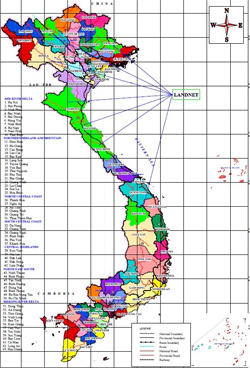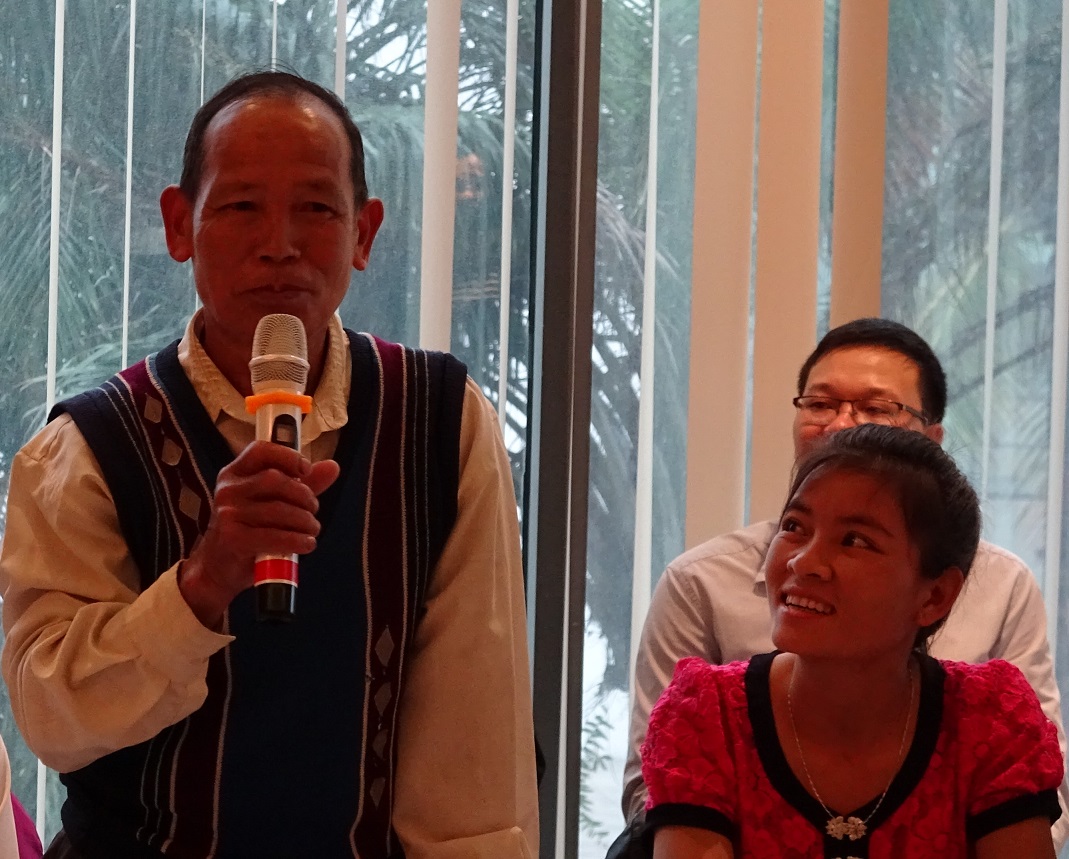“There is a threat of revival of rubber project, because the price of natural latex has reached VND 20,000 per kilo”. This is a warn by Mr. Phan Dinh Nha, advisory expert on forestland policy at the yearly meeting of LandNet. This is especially applicable for some mountainous regions, such as the case of Chieng village in Hanh Dich commune, Que Phong district, Nghe An province.
A local representative of LandNet of the Que Phong district told a story that the Thai ethnic community in Pom Om village had been granted with land right certificate, however the Nghe An rubber company used excavators to level and infringed upon the community forestland area in 2013. Villagers have sent several petition letters to the communal and district People’s Committees to react against the company. Therefore, Mr. Pham Quang Thai, Chairperson of the company’s board came to a consultation meeting and promised to stop violation and return land to Pom Om community. After a time of calm, this company came back to encroach 3 hectares of land, which had been allocated informally to the Chieng village (according to real use and without land certificate), which is belonged to Hạnh Dịch commune and located close to Tiền Phong commune. Because of the company’s deforestation for rubber plantation and an uncertainty of the future conflict resolution, some people took advantage to clear trees and grow acacia in order to claim their land right in the future. Therefore, it is estimated that the forest area of the Chieng village has lost by 70% during the last three years.
Mr. Vi Đình Văn (from Chiếng village, Hạnh Dịch commune, Quế Phong district, Nghệ An province) talking about anxiety in his community
Preservation of community forest is now under an increasing pressure caused by the Nghệ An provincial rubber promotion programme. Though there has been a guiding requirement from the Central Government that rubber area should be kept intact and not expanded, some Nghe An provincial officials showed their intention to grow more 6,000 hectares of rubber in the next 3 years (according to a news release from the Nghệ An provincial People’s Committee meeting dated 26th October 2016)[1]. In addition, it is necessary to see responsibility of the local authority while they are facing people’s life and contention, as stated by a Chieng villager “We have written a pile of complaint letter sending to district and provincial authorities. However, the communal People’s Committee chairman said that the rubber company encroaching area is right and fit the the provincial mapping. When we asked provincial authorities, they admitted that the company was wrong. Therefore we wonder whether the communal chairman and the company are mutually endorsed”.
At the annual review meeting of LandNet dated 10th January 2017 in Hanoi, the network representatives from provinces of Lạng Sơn, Lào Cai, Nghệ An and Hà Tĩnh were all interested in how to maintain firmly, expand and enrich the community forestland areas. Also at this forum, the LandNet advisory expert urged that “you need to continuously protect your own rights. The Land Law of 2013 provides that land users have right to get land certificates (informally known as “red books”) for legal management while land renting contractors do not. However, in reality, community’s land rights are now greatly challenged by the Circular 28/2014/TT-BTNMT on the guidance to land inventory. One of the provisions of this Circular is that forestry land of the village community is only listed in the category of “allocation for temporary management”. According to the Land Law of 2013, village communities can have forestry land allocated and get land certificates granted. Implementation of the Circular 28/2014/TT-BTNMT has resulted in a category of ‘allocation for temporary management’, as it was classified by the Nghe An provincial People’s Committee. Eventually, according to the mentioned category of this inventory, the village community’s forestland, such as that of the Pom Om village community is considered as not yet qualified as getting “red book”. Therefore, the implementation of the Circular 28/2014/TT-BTNMT has caused a harm in the community’s rights to confirm their “red books”.
In order to solve the above-mentioned discrepancy, to assure forestland rights, essential living spaces of ten of millions of ethnic minority people in Vietnam, policy makers should seriously confirm and make sure community land rights, especially while this rights are increasingly challenged by private companies, which often seek profit for a small number of people. Whenever people have full land right to work on their own land, policies of supporting disadvantageous areas will be able to be effective to help poverty reduction.























